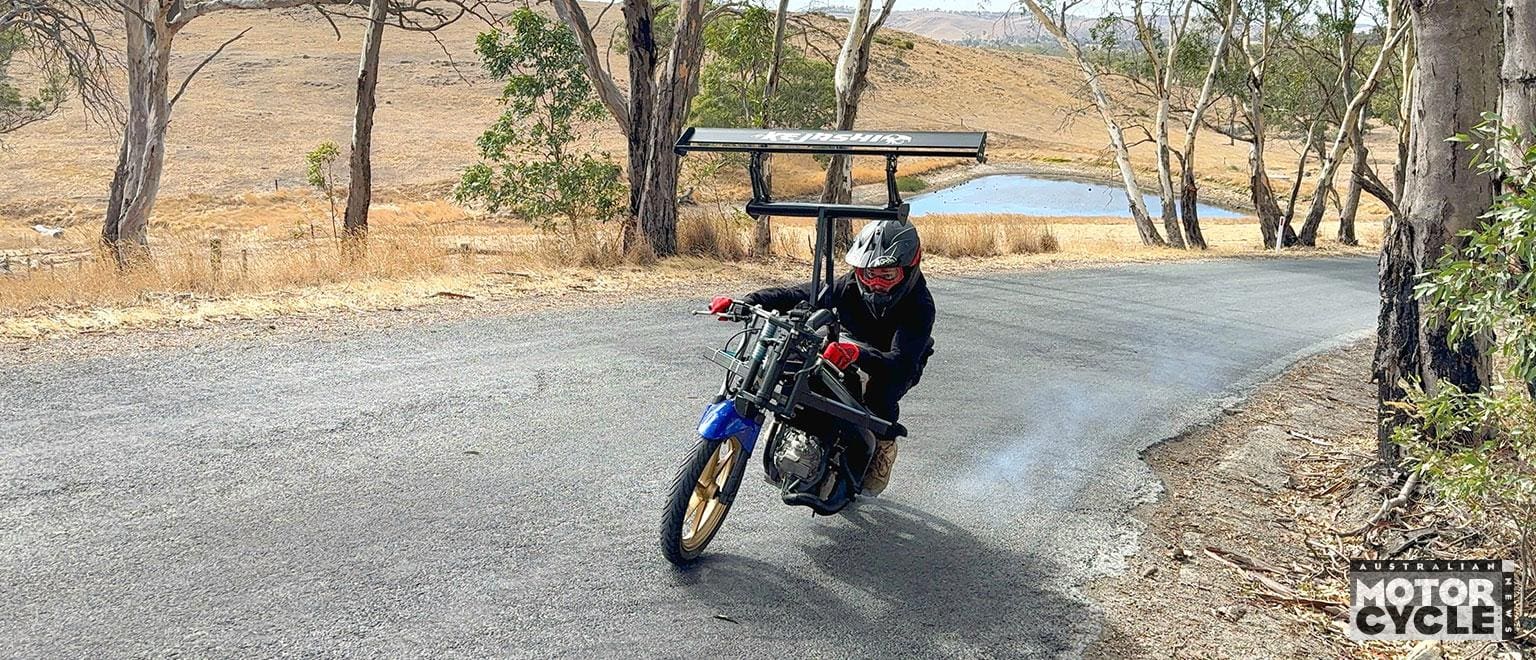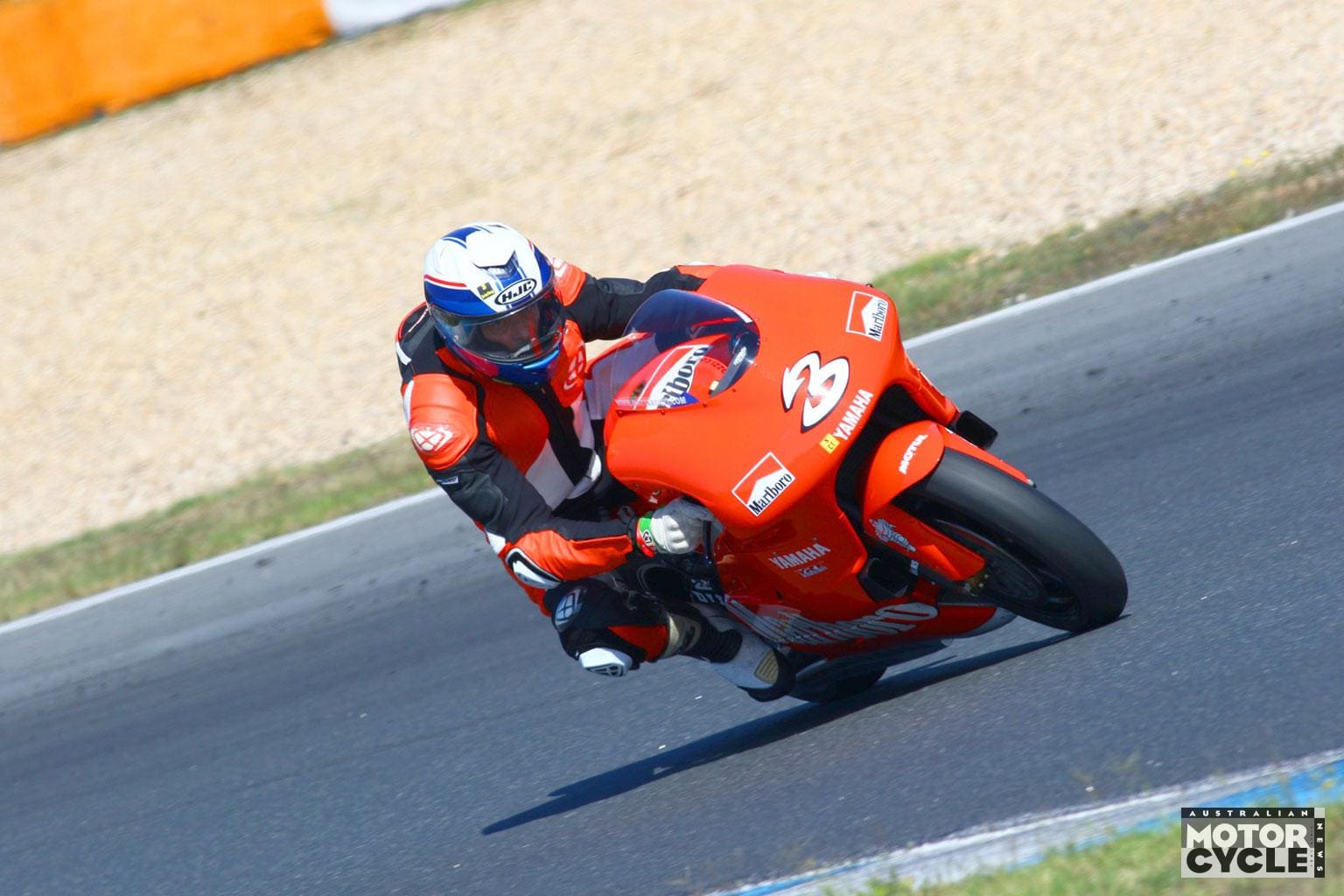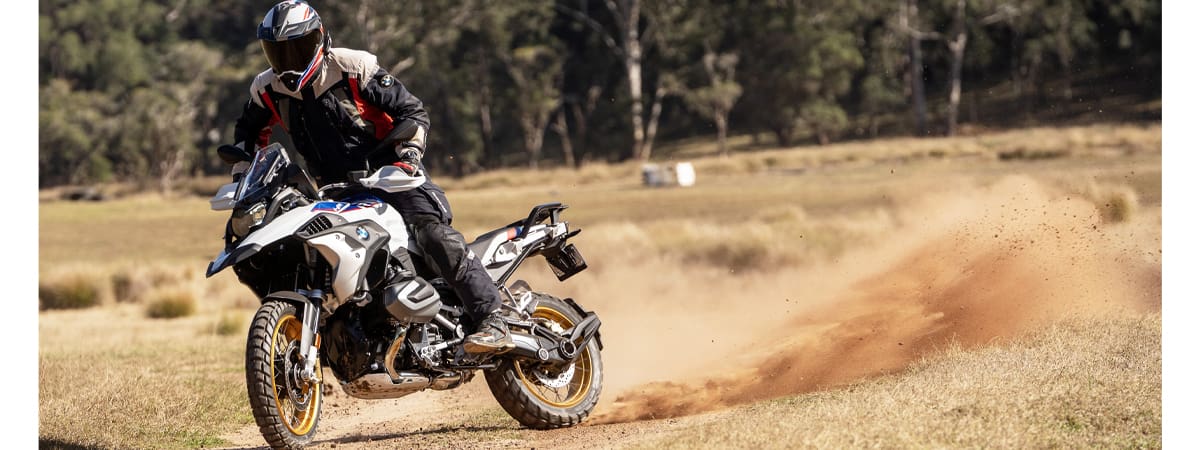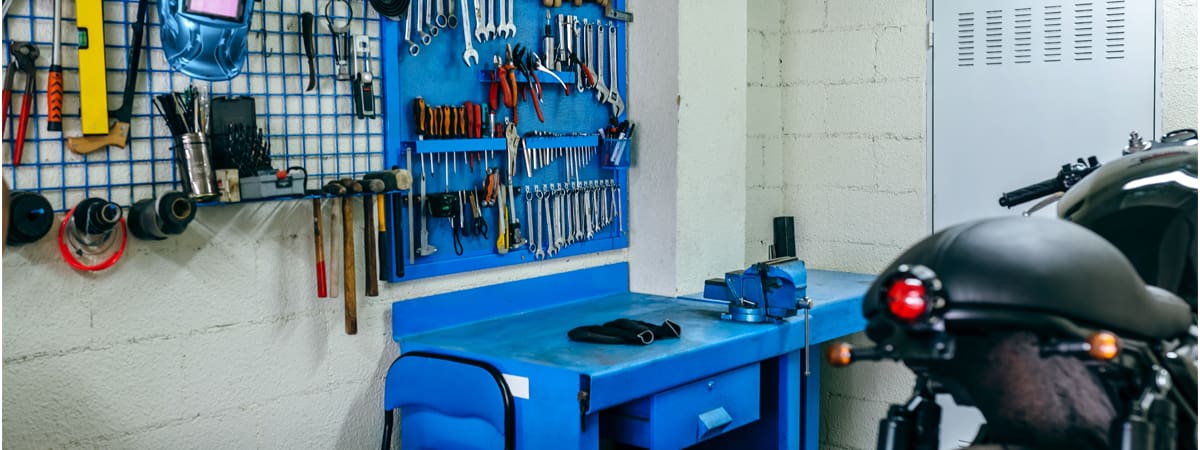You might think that the size of your motorcycle will largely dictate just how well prepared you can be for a night or two in the bush, and in some ways that’s true. But careful planning and efficient packing means that even LAMS-approved non-adventure style machines will ferry you effectively to a few nights under the stars.
Choosing your tent
Hiking equipment is a practical option for motorcycle camping due to its compact nature, but while hiking gear is designed to be carried on your person and therefore lightweight, it’s not always the most practical choice on a bike.
This is especially the case when it comes to your tent. An extremely lightweight single-man tent makes perfect sense when you’re having to lug the thing around on your back. But on a motorcycle, when your tent needs to not only keep you dry at night, but also your riding gear and belongings, then it’s a better idea to opt for a compact two- or three-man option. Its weight is less of an issue when strapped to your motorcycle and it means you’ll get a better night’s sleep knowing critters aren’t making a cosy home in your helmet liner. And make sure the vestibule of the tent is large enough to keep your boots in without them touching the fabric of your tent – if it rains overnight and the fabric is in contact with your boots, you’re bound to wake with an inch or two of water in the bottom of them.
And you’ll never regret opting for a tent tall enough to sit upright in. Having to get dressed, pack away your sleeping bag and roll up your bedroll all while either laying down or hunched over isn’t a fun way to start (or end) a big day’s riding. And throw in a small blue tarp to use as a groundsheet. It’s one extra layer between you and the earth, it’ll protect your tent and keep the bottom of it dry, too.
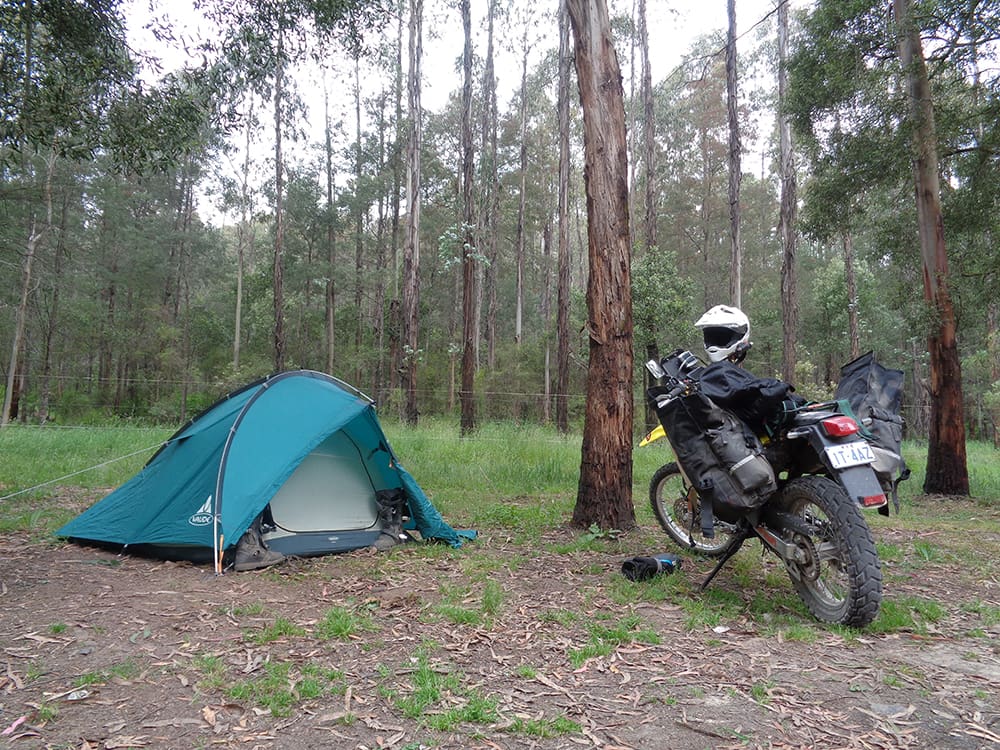
The essentials
As well as a tent, there’s a few things you should add to your must-have list. Invest in a good quality sleeping bag. Even if you think you’ll only be camping in warm weather, opt for a bag with a minimum rating of 0ºC. You can always lay on top of it on a warm night but weather is a fickle thing and a comfortable night’s rest will ensure a safer day on the bike the following day.
The same rule applies to your mattress and pillow. It might seem like a good idea to chuck your yoga mat in and use a scrunched up jumper as a pillow, but there’s plenty of reasonably priced, compact options available these days, which could mean the difference between navigating your way out of the bush in one piece the following day and not. And opt to store your pillow and sleeping bag in a waterproof dry bag; whether you encounter rain or ford crossings, crawling into a dry sleeping bag is imperative.
Clean drinking water is a must – always arrive at your campsite with a minimum of one litre (per person). There may be an opportunity to boil some water sourced nearby, but never count on it.
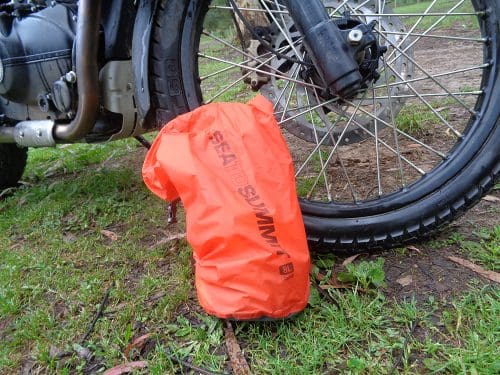

Loading up
There’s a few things you need to consider when loading your camping gear onto the bike. The most important thing is balance. You always want the heaviest things as low and as close to
the bike as possible.
Camping tends to take you off road so it’s important to keep the bike’s centre of gravity low when you’re navigating your way through the bush to your campsite. Where possible, try and protect the things which need to remain dry as best you can. This may mean putting it at the bottom or behind the flow of the wind and weather, but if the weather looks like it could turn nasty – use dry bags, they come in a huge range of sizes.
Don’t underestimate the amount of daylight you’ll need to set up. Choose a flat piece of ground to pitch your tent and, if it looks like rain, be sure to put something large and sturdy underneath your side stand so you don’t wake to find it sunk in the ground and on its side. It’s also a good idea to angle the bike away from your tent for the same reason.

Meals and mess
If your chosen campsite, area and fire restrictions allow, nothing beats a meal eaten under the stars that has been cooked on a campfire. But as we head into spring and summer, this will become virtually impossible. Many people think food needs to be basic and pre-packaged when camping on a motorcycle, but again, with some careful planning and efficient packing, you can eat as well as you would in your kitchen at home. As well as cutlery, a heatproof cup or tin mug and a plastic plate that is deep enough to use as a bowl if required, between a small pair of tongs, an appropriately sized spatula (or small paint scraper) and a sharp (foldable is good) knife, you pretty much have all the utensils you need to prepare and eat a decent meal. A small sponge, small bottle of environmentally friendly dishwashing liquid and a tea towel take up hardly any room and it means you’re not packing away dirty or greasy dishes into your kit. Throw in three pieces of folded paper towel, three pieces of folded tin foil and three sandwich bags, all things that take no room and come in very handy in a whole host of situations, not least for your leftover snags.

Camp kitchen
If restrictions allow, the effort required to build a fire and to cook on it is absolutely worth it. I’ve even been known to heat a large, flat river rock in the fire and cook a steak on it – but there are some other really clever, useful and efficient ways of cooking.
If there’s no access to a fire and because coffee is important to start any day’s ride, we like to take two cooking sources – one for boiling your water while the other is whipping up bacon and eggs for breakfast.
A Trangia is a compact and windproof camp stove, which uses metho as its fuel source, offers frypan, saucepan and kettle options and packs down quite small. A good option for water is a JetBoil – it uses butane as its heat source, comes with a coffee plunger attachment and boils water in 60 seconds. Between the two, you’ve got all your bases covered. But if you can’t justify the expense, grab a disposable barbecue on your way out of town.
For things like coffee or tea, a mini carton of long-life milk and your evening’s booze in your pre-trip packing, it’s a good idea to leave all the fresh food shopping to the last sign of civilisation before heading into your chosen campsite. This not only ensures everything is fresh and relatively unscathed when you arrive, but it generally negates the need for refrigeration, given it’ll usually only be a few hours until you’ll be cooking your dinner.

Words & Photography Kellie Buckley

